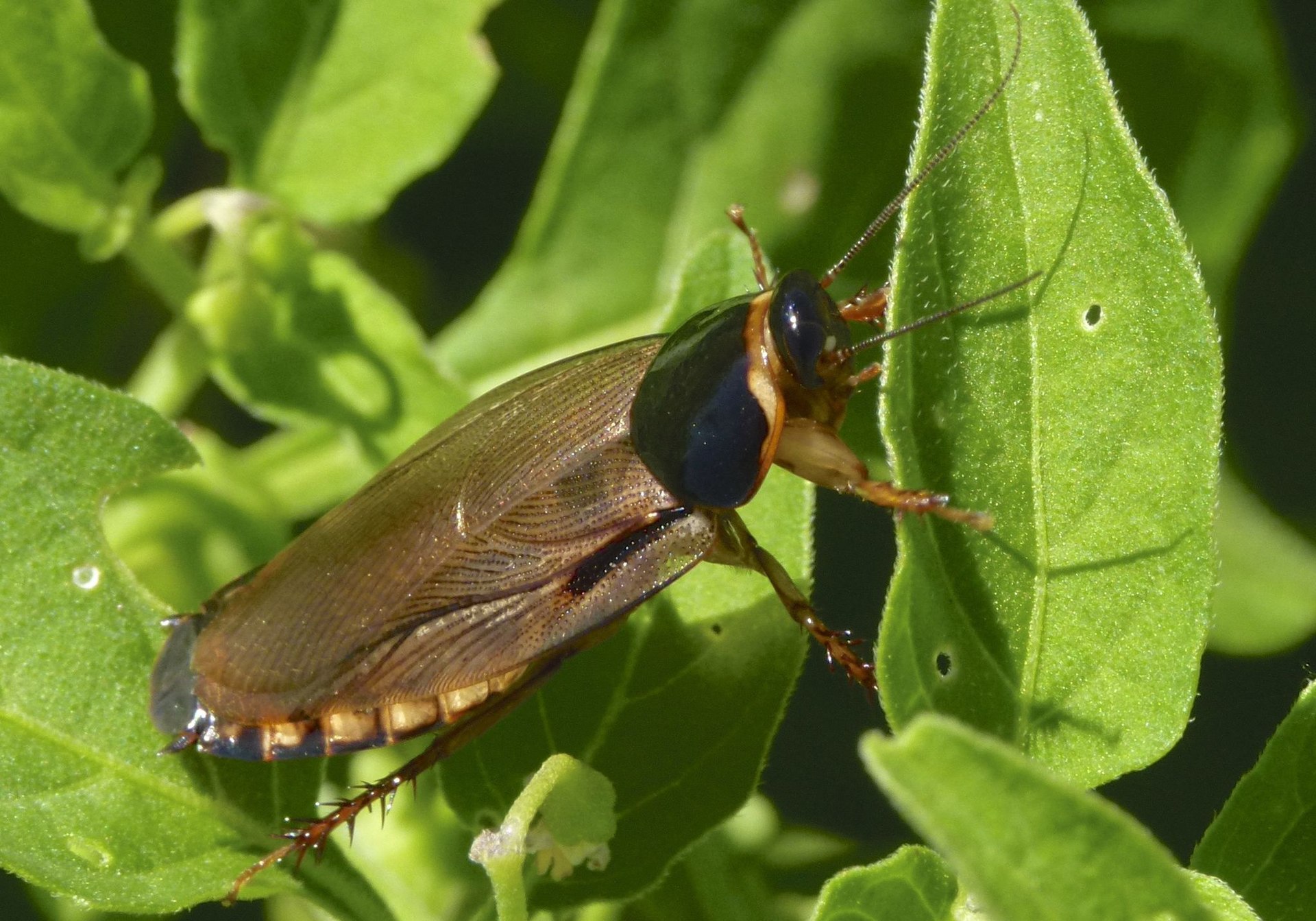The ubiquitous cockroach, order Blattodea, has been in Hawaiʻi a fairly long time. Early sailors mention them as infesting their ships as they sat at anchor in Hawaiian waters. Exactly when they arrived is not known, but as more people came to Hawaiʻi from different places, more types of cockroaches arrived.
Today, there are at least 19 species of cockroaches found in Hawaiʻi. Only three, however, are commonly associated with humans and are considered pests. Because of their habitat and habits, cockroaches can pick up germs on the spines of their legs and bodies as they crawl through decaying matter or sewage. If they are in your house and in your kitchen, they can carry the germs into food or onto food surfaces. Their droppings, secretions, cast skins and dead bodies roaches have allergens which can trigger asthma attacks, especially in children.
American Cockroach / B-52
The scariest of these Blattodea is the American cockroach. It is the largest of the common roaches, up to around 3″ long, plus “whiskers,” and mahogany in color. If you can get past the “ick” factor, the shiny wings are actually quite beautiful.

It is known locally as the B-52, because if cornered or feeling threatened these aggressive, large, heavy-bodied beasties will launch themselves at you, making “bombing runs” at your face to try and scare you off. They have a wicked bite which can cause infections due to their habit of eating bacteria-laden material such as decaying matter, dead animals, garbage, or whatever they can find. They like to live in warm, moist areas such as under sinks, in rock walls, tree stumps, heavy vegetation, and other organic matter. The best way to get rid of them is prevention. Keep your home clean, and eliminate habitat wherever possible.
German Cockroach / Grocery Bag Cockroach
The German cockroach is under an inch long, light brown to tan in color, and marked with dark stripes that run lengthwise on its body. This species is the speedy little bug that you’ll find running up the walls when you turn on the kitchen light – or sit down in a restaurant. They often enter the home hiding in the folds of paper grocery bags. They eat just about anything from envelopes (they love to lick the glue off) to labels on canned goods, to actual food. The happily live in compost piles, and around plumbing pipes where they will happily dine on the mould that grows in the condensation. They love moist areas, but dislike light. They often spend the day hiding behind baseboards, in cracks in cabinets or pantries, or under stoves, refrigerators and dishwashers. They have a distinctive odor which will emanate from areas they have colonized, such as inside bathroom walls. They also leave droppings which look like black sand, and brown papery egg cases.

Surinam Cockroach / Burrowing Cockroach / Lava Bug
“Lava Bugs” are most common on the kona (leeward) sides of our islands. They generally stay out of doors and are largely unnoticed, creeping about in lawns. If you picnic on the lawn, they may pop up and scurry across your mat, trying to escape. They have a shiny dark brown to black head with dark brown wings. They are about 3/4 of an inch in length. They are considered a yard pest. The name “lava bug” is said to have been created by a real estate agent who wanted to not scare clients. They really prefer the out of doors to living inside our homes.

Getting rid of roaches
With the number of roaches in our islands, there are also a number of ways to combat them. At the top of the list are:
- Get rid of clutter
- Clean, clean, clean
Roaches love to hid between things, under things, and in things. And they can happily survive by licking tiny grease spots off cabinets, walls, and counters.
